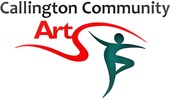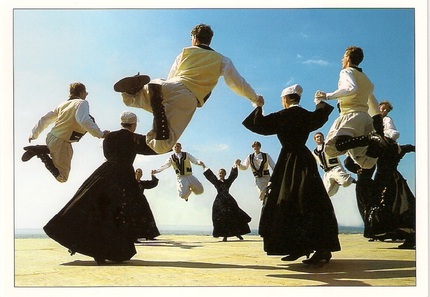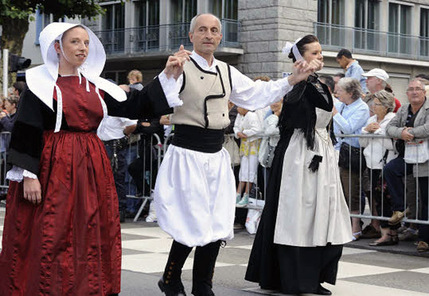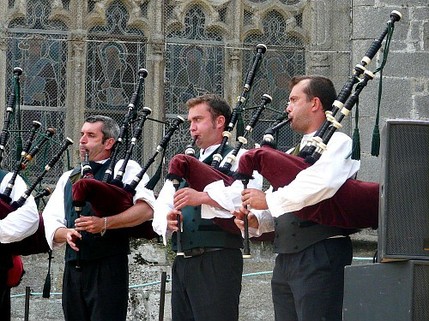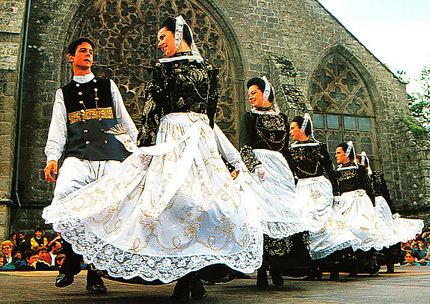History of Breton Dance
|
In Brittany, music and dancing have always been an expression of identity for the folk society. They were a particular moment favouring the expression of individuals who fused together through a happy time. They followed the different stages of life and structured its organisation. Yet the practice of dancing and music was not restricted to a pure entertainment. It was the manifestation of the folk social order which, through a collective activity, expressed the status of each individual within the community.
The circular form, the typical pattern of the most dominant dance in the western Brittany repertoire, is very representative of the social structure. The circle is the representation of a community which can express itself only if each dancer is at the right place. The individual is both a minor and a vital element in the working order of the dancing and singing. Dancing and singing convey the expression of an identity. This is the fundamental character which has permitted the Breton culture to develop through the ages by adapting to the continuous cultural evolution. It also explains the current extraordinary enthusiasm of thousands of Bretons who today keep practising music and dancing, thus perpetuating a centuries-old tradition. In the agricultural society of the 19th Century, the most common occasion on which dancing took place was a wedding. Other opportunities for dancing were:
More recently, throughout the second half of the 20th Century, a revival of traditional Breton dancing has taken place, to such an extent that it can now be considered to be at the forefront of contemporary Breton cultural expression, along with the music which accompanies it. Two main opportunities exist to experience Breton dance: fest-noz (night festival) and fest-deiz (day festival). The former reunites both young and old in a celebration of their cultural heritage, whereas the latter tends to be frequented by a somewhat older collection of people. Breton dance is accompanied by musicians and singers playing and singing in duos, trios, quartets and, sometimes, even larger groups. Traditional acoustic instruments are often the mainstay of these occasions, though some groups have also taken up electric instruments as well. The most ubiquitous instruments are the accordion and two characteristically Breton wind instruments: the biniou (a kind of bagpipe) and the bombarde (a reed instrument similar to the oboe). |
